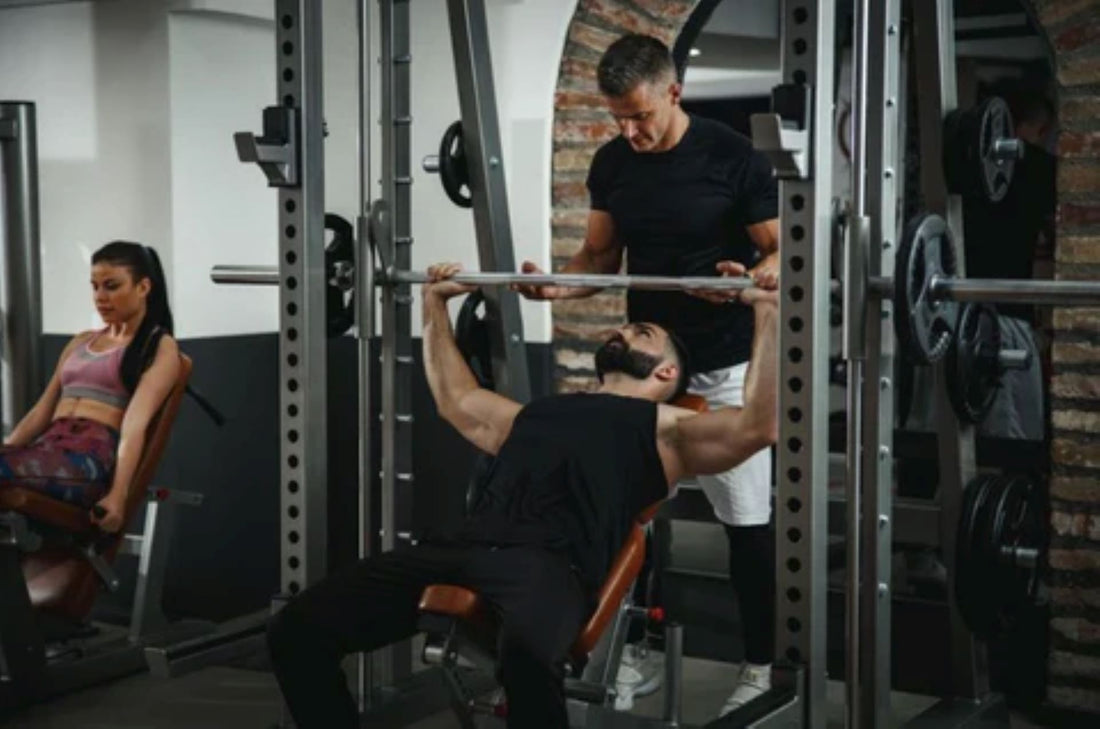
The bench press is one of the most popular and effective exercises for building upper body strength. But have you ever wondered, which muscles does bench press work? Understanding the specific muscles targeted by this powerhouse exercise can help you optimize your workout and achieve better results.
In this article, we will delve deep into the anatomy of the bench press, exploring the primary, secondary, and stabilizing muscles activated during this compound lift. Whether you're a beginner or an experienced lifter, this guide will provide valuable insights to enhance your training regimen.
Primary Muscles Targeted by the Bench Press
Pectoralis Major
The pectoralis major, or pecs, is the primary muscle group targeted by the bench press. This large chest muscle is responsible for horizontal adduction, flexion, and medial rotation of the shoulder joint. The bench press effectively engages both the clavicular (upper) and sternal (lower) heads of the pectoralis major, promoting balanced chest development.
Deltoids
The deltoids are another essential muscle group activated during the bench press, particularly the anterior (front) deltoid. This muscle aids in shoulder flexion and horizontal adduction, complementing the pectoral muscles' movement. Engaging the deltoids helps in lifting heavier loads and stabilizing the shoulder joint.
Triceps Brachii
The triceps brachii, or triceps, are the primary muscles involved in elbow extension, a critical component of the bench press motion. Strong triceps are essential for locking out the lift and generating additional power during the press.
Secondary Muscles Involved in the Bench Press
Latissimus Dorsi
Though not the primary focus, the latissimus dorsi (lats) play a supportive role in the bench press. These large back muscles help stabilize the shoulder blades and provide a solid foundation for pressing heavier weights.
Biceps Brachii
While primarily known for their role in arm curls, the biceps brachii assist in shoulder stabilization and flexion during the bench press. Their involvement is more pronounced in exercises like the close-grip bench press, where the biceps work harder to control the movement.
Stabilizing Muscles Engaged During the Bench Press
Rotator Cuff
The rotator cuff consists of four small muscles - the supraspinatus, infraspinatus, teres minor, and subscapularis - that help stabilize the shoulder joint during pressing movements. Strengthening these muscles can improve shoulder health and prevent injuries during heavy bench pressing.
Serratus Anterior
The serratus anterior is a crucial stabilizing muscle that supports the scapula (shoulder blade) during bench pressing. A strong serratus anterior enhances shoulder stability and reduces the risk of shoulder impingement.

Variations of the Bench Press and Their Muscle Engagement
Incline Bench Press
The incline bench press targets the upper portion of the pectoralis major more intensely than the flat bench press. It also places greater emphasis on the anterior deltoids, helping to develop the upper chest and shoulders.
Decline Bench Press
In contrast, the decline bench press emphasizes the lower portion of the pectoralis major, while reducing the strain on the shoulders. This variation can help achieve a more defined lower chest.
Close-Grip Bench Press
The close-grip bench press shifts the focus towards the triceps brachii, while still engaging the pectoralis major and anterior deltoids. This variation is excellent for building triceps strength and size.
Optimizing Your Bench Press Routine
Proper Form and Technique
Ensuring proper form and technique is crucial for maximizing muscle engagement and preventing injuries. Key tips include maintaining a tight grip on the bar, keeping your feet firmly planted on the ground, and engaging your core throughout the lift. Lower the bar to your chest in a controlled manner and press it back up using your chest, shoulders, and triceps.
Progressive Overload
To build strength and muscle size, gradually increase the weight you lift over time. This principle of progressive overload ensures continuous muscle adaptation and growth. Aim to add small increments of weight each week or focus on increasing your number of repetitions or sets.
Rest and Recovery
Adequate rest and recovery are essential for muscle growth and injury prevention. Allow at least 48 hours of recovery between bench press sessions, and ensure you're getting enough sleep and nutrition to support muscle repair and growth.
Conclusion
Understanding which muscles the bench press works can significantly enhance your workout routine and help you achieve your fitness goals. By focusing on the primary, secondary, and stabilizing muscles engaged during the bench press, you can tailor your workouts for optimal results. Remember to incorporate variations, maintain proper form, apply progressive overload, and prioritize rest and recovery for a well-rounded and effective bench press training program.



















